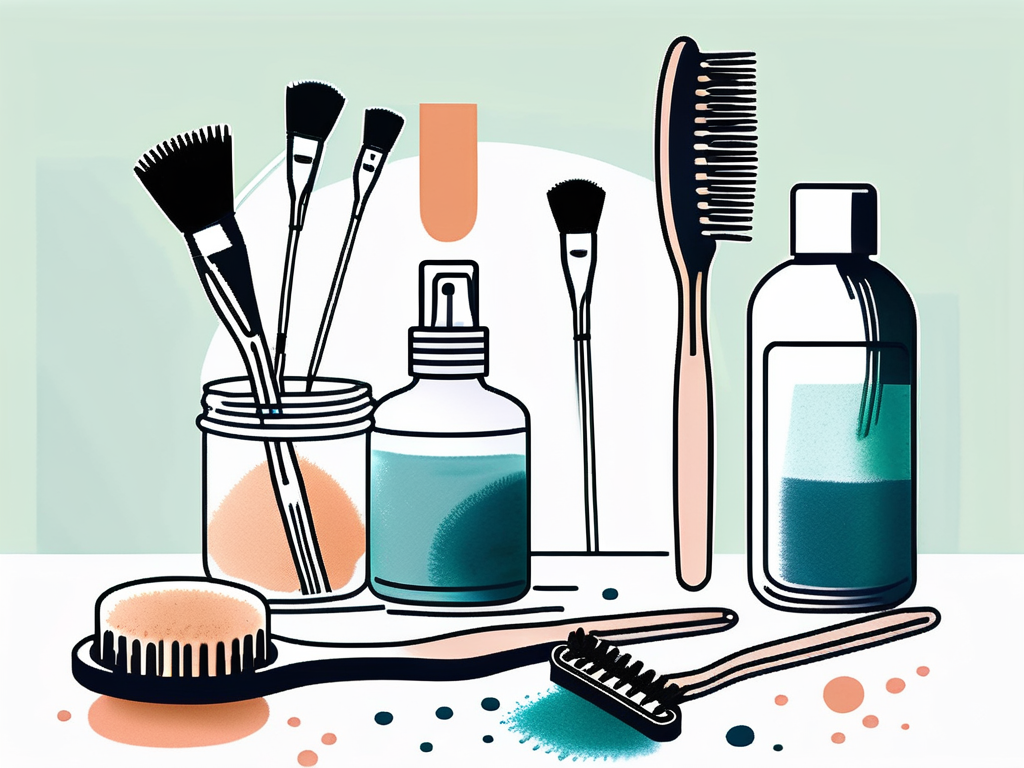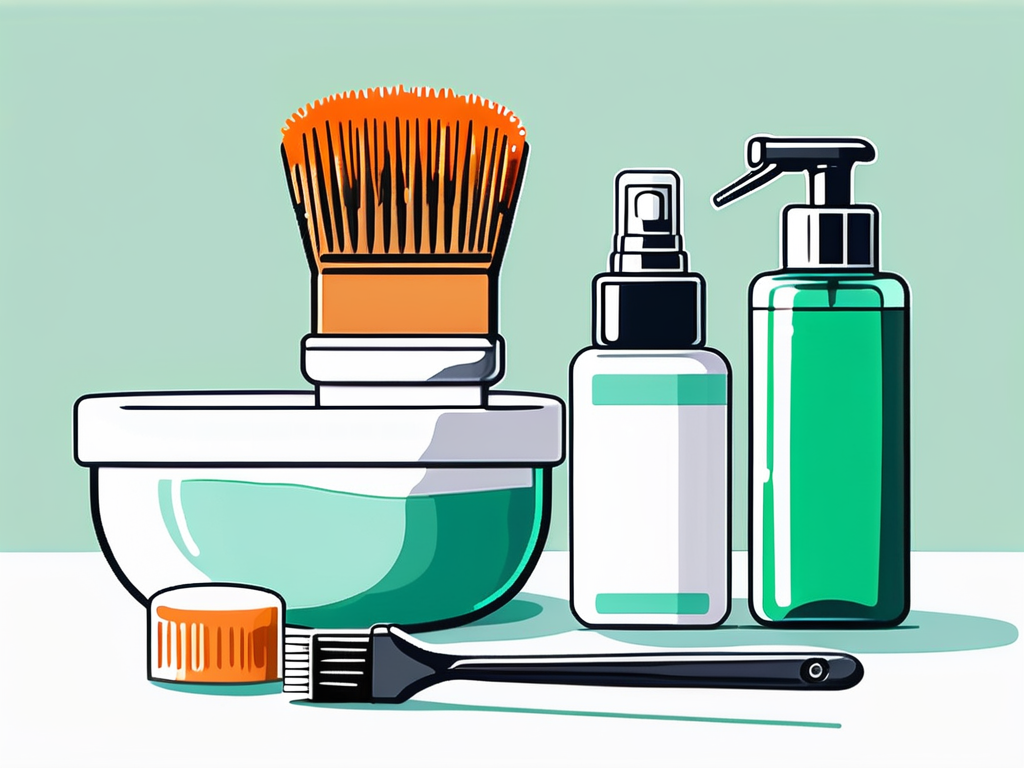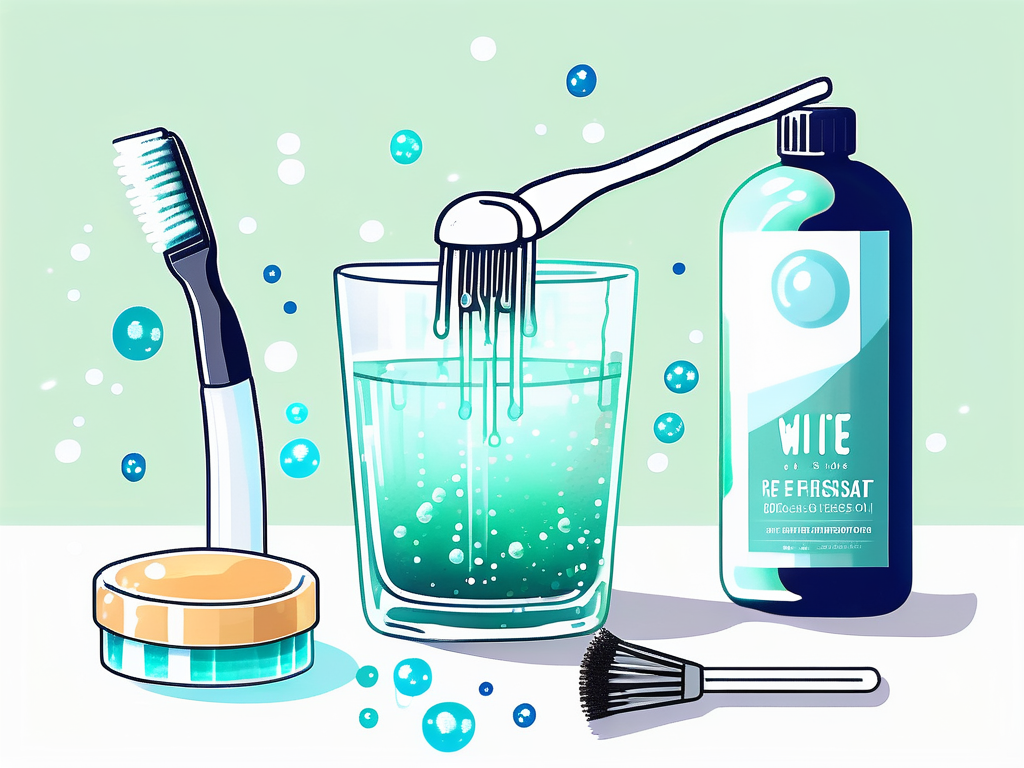Do you wear a retainer? Whether you have braces or have had them in the past, a retainer is an essential dental appliance that helps maintain the alignment of your teeth. But did you know that proper retainer hygiene is crucial for keeping your mouth healthy and your retainer effective? In this guide, we will delve into the importance of retainer hygiene, the different types of retainers and their cleaning needs, various retainer cleaning methods, and provide you with a step-by-step guide to cleaning your retainer. We will also share some valuable tips for keeping your retainer fresh. So, let's dive in!
Understanding the Importance of Retainer Hygiene
Retainer hygiene is not something that should be taken lightly. Your retainer interacts with your mouth on a daily basis, which means it can accumulate bacteria, plaque, and odors if not properly cleaned. Maintaining good retainer hygiene practices is essential to prevent oral health problems, such as bad breath, gum disease, and tooth decay, and to keep your retainer in top condition.

When it comes to retainer hygiene, it's not just about keeping your retainer clean for aesthetic reasons. The health of your mouth is directly impacted by the cleanliness of your retainer. Bacteria that build up on an unclean retainer can easily transfer back into your mouth, potentially causing infections or other oral health issues. By establishing a regular cleaning routine, you are not only preserving the lifespan of your retainer but also safeguarding your overall oral health.
Why Clean Your Retainer?
Regular cleaning of your retainer helps to remove bacteria and plaque buildup, which can lead to bad breath and gum disease. Additionally, cleaning your retainer helps keep it free from food particles, preventing unpleasant odors and maintaining its effectiveness.
Moreover, proper retainer hygiene can also contribute to the longevity of your retainer. A clean retainer is less likely to develop cracks or wear down quickly, ensuring that it continues to fit properly and serve its purpose effectively. By incorporating simple cleaning techniques into your daily routine, you are investing in the durability and functionality of your retainer.
The Consequences of Neglecting Retainer Hygiene
Failure to properly clean your retainer can result in oral health problems. Bacteria and plaque buildup can lead to inflammation, gum disease, and even tooth decay. Neglecting retainer hygiene can also cause the retainer to become discolored, develop an unpleasant odor, or even break.
Furthermore, overlooking retainer hygiene can have financial implications. Neglecting to clean your retainer may lead to the need for premature replacement or costly repairs. By prioritizing retainer hygiene and following recommended cleaning practices, you are not only preserving your oral health but also potentially saving yourself from unexpected expenses related to retainer maintenance.
Different Types of Retainers and Their Cleaning Needs
Retainers are an essential part of maintaining a beautiful smile after orthodontic treatment. However, it's not just wearing them that's important; proper cleaning is crucial to keep them clean and fresh. Let's delve deeper into the cleaning needs of different types of retainers:
Cleaning Hawley Retainers
Hawley retainers, also known as wire retainers, are a classic choice. They consist of a metal wire that holds the teeth in place and an acrylic plate that rests against the roof of the mouth or the bottom of the tongue. Cleaning a Hawley retainer is relatively simple. After each use, rinse it with water to remove any saliva or debris. Then, gently brush it using a soft toothbrush and mild soap or non-alcoholic mouthwash. Avoid using hot water, as it can warp the retainer and affect its fit.
It's worth noting that Hawley retainers can be customized with various designs and colors. Some people opt for their favorite sports team logo or a unique pattern. This personal touch adds a touch of individuality to the retainer, making it more enjoyable to wear.
Cleaning Clear Plastic Retainers
Clear plastic retainers, such as Essix retainers, have gained popularity due to their discreet appearance. These retainers fit snugly over the teeth, making them almost invisible. However, their transparency also means that they are susceptible to discoloration if not properly cleaned.
To keep a clear plastic retainer looking its best, rinse it with water after each use to remove any saliva or food particles. Then, gently brush it using a soft toothbrush and mild soap or non-alcoholic mouthwash. Avoid using hot water or abrasive cleaners that can scratch the retainer, as this can compromise its transparency.
For those who want to add a touch of style to their clear plastic retainers, some orthodontic practices offer the option of adding a colored or patterned design. This allows individuals to express their personality while maintaining the necessary orthodontic treatment.
Cleaning Fixed Retainers
Fixed retainers, also known as permanent retainers, are a popular choice for those who want a retainer that requires minimal effort. These retainers are bonded to the back of the teeth, making them a permanent fixture in your mouth. While they provide excellent long-term stability, they do require extra care and attention to maintain their cleanliness.
To clean a fixed retainer, it's essential to use floss threaders or interdental brushes to remove any food particles and plaque that may accumulate around the wire. Regular dental visits are crucial to ensure the fixed retainer remains in good condition and to address any issues that may arise.
It's worth mentioning that fixed retainers can sometimes cause slight discomfort or difficulty in flossing. However, the benefits they provide in maintaining a straight smile often outweigh these minor inconveniences.
Remember, regardless of the type of retainer you have, proper cleaning and maintenance are essential to keep your smile looking its best. By following the recommended cleaning methods for your specific retainer, you can ensure its longevity and effectiveness in preserving your orthodontic results.
Exploring Various Retainer Cleaning Methods
Now that we understand the different types of retainers and their cleaning needs, let's explore some popular retainer cleaning methods:

Using Commercial Retainer Cleaners
Commercial retainer cleaners, such as effervescent tablets or cleaning solutions specifically formulated for retainers, are widely available. Follow the instructions on the packaging to clean your retainer effectively. Remember to rinse your retainer thoroughly with water after using a commercial cleaner to remove any residue or chemicals.
DIY Retainer Cleaning Solutions
If you prefer a more natural approach or don't have access to commercial retainer cleaners, you can create your own DIY cleaning solution. One popular DIY solution is to soak your retainer in a mixture of equal parts water and vinegar for 15-30 minutes. Rinse your retainer thoroughly with water before placing it back in your mouth. Another option is to use a mixture of water and baking soda to create a paste and gently brush your retainer with it.
Ultrasonic Cleaner for Retainers
An ultrasonic cleaner is a device that uses high-frequency sound waves to remove dirt and bacteria from objects, including retainers. Simply place your retainer in the ultrasonic cleaner, add water, and let the device do the work. However, be sure to follow the manufacturer's instructions and use an appropriate cleaning solution or plain water.
Step-by-Step Guide to Cleaning Your Retainer
Now that we've explored the importance of retainer hygiene and the different cleaning methods, let's provide you with a step-by-step guide to cleaning your retainer:
Daily Cleaning Routine
- Rinse your retainer with water after each use to remove loose debris.
- Gently brush your retainer using a soft toothbrush and mild soap or non-alcoholic mouthwash. Pay attention to all sides of the retainer.
- Rinse your retainer thoroughly with water after brushing to remove any soap or mouthwash residue.
Weekly Deep Cleaning Process
- Create a cleaning solution by combining equal parts water and vinegar.
- Place your retainer in the cleaning solution and let it soak for 15-30 minutes. This helps to remove any stubborn stains or buildup.
- Rinse your retainer thoroughly with water to remove any vinegar smell or taste and any remaining cleaning solution.
Tips for Keeping Your Retainer Fresh
Keeping your retainer fresh goes beyond regular cleaning. Here are some additional tips to ensure the longevity and freshness of your retainer:

Proper Retainer Storage
When you are not wearing your retainer, store it in its designated case. This protects it from damage and prevents it from attracting dust or bacteria. Avoid placing your retainer in a napkin or tissue, as it can easily be misplaced or thrown away.
Avoiding Damaging Habits
Be mindful of habits that can damage your retainer. Avoid biting or chewing on hard objects, such as pens or ice, as this can cause the retainer to break or warp. Remove your retainer before eating to prevent food particles from getting trapped and causing hygiene issues.
When to Replace Your Retainer
Retainers have a lifespan, and it's essential to replace them when necessary. If your retainer becomes cracked, discolored, or ill-fitting, it's time to consult your orthodontist for a replacement. Regular dental check-ups can help identify any issues with your retainer and ensure it is functioning correctly.
By following these tips and incorporating them into your retainer care routine, you can keep your retainer fresh and maintain good oral health. Remember, a healthy and clean retainer leads to a confident smile!













